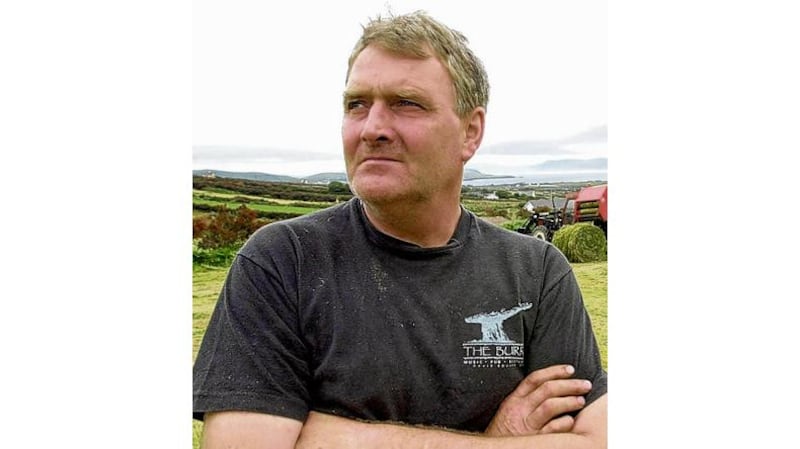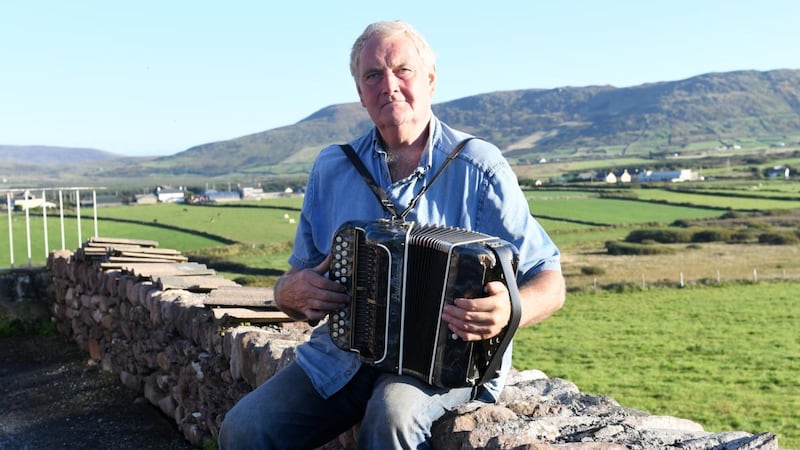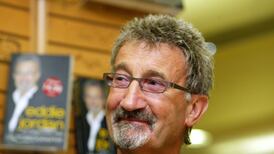Born: August 26th 1949
Died: January 9th 2023
West Kerry’s rich musical landscape has been deprived of one of its most gifted and colourful exponents with the death of accordion player and singer, Séamus Begley.
Born and reared in a vibrant musical family in Baile na bPoc in west Kerry, Séamus, or James as he was known locally, was the fifth of nine children. His father, Breanndán, was from Ballydavid and his mother, Mary Ellen (née Lynch), was a native of Baile na bPoc. His father played the melodeon and his mother was a beautiful singer who sang songs in both Irish and English.
Without Signal security leak, we would not have known depth of Trump’s contempt for Europe
Even the word ‘miscarriage’ seems to suggest the mother is somehow at fault
Eight critical pointers to look out for on Trump’s tariff D-day
Speaking rights for Michael Lowry would not be on my list of issues critical to our democracy
It was an Irish-speaking household, located in the heart of the Dingle peninsula known as Corca Dhuibhne. The Begley farmhouse was steeped in music, a fact that no doubt influenced Séamus’s father, Breanndán when he decided to open a dance hall in nearby Muiríoch, where Séamus as a young teenager and his brother, Breanndán played nightly. It was a musical and social apprenticeship that served Séamus well. He loved playing at the céilithe for the dancers, and seeing how his rousing accordion tunes lifted the dancers, propelling them through the sets with gusto.
As the eldest son, Séamus inherited the family farm. Although he lived by the wild Atlantic, and a stone’s throw from Brandon Creek, the sea held no attraction for him. His greatest loves in life were music and driving tractors, and whenever he got the chance, he married his passions, with the accordion tucked beside him on the tractor, all the better to accommodate regular musical interludes during long days of labour.
Séamus was possessed of a voice like no other. A strapping man with a physicality born of working the land, he sang with extraordinary tenderness. His voice was gentle and rich in tone, and he inhabited every word of his chosen songs (in Irish and English) with a depth of expression and a subtlety of phrasing that set him apart. His mischievousness was another hallmark of his personality, and no one within hearing distance was immune from his razor-sharp witticisms, imbued with all the subtleties of both Irish and English, each one accentuated by the accompanying antics of a pair of gamey eyebrows.

His first album, An Ciarraíoch Mallaithe, was recorded with his eldest sister, Máire, in 1973 on the Gael Linn label, and together they recorded a second album, Plancstaí Baile na bPoc, in 1989. It was his encounter with the Australian guitarist, didgeridoo player and composer, Steve Cooney, however, that proved to be the lightning rod for an extraordinary collaboration that propelled the music of west Kerry on to a global stage. Their seminal recording, Meitheal, released in 1992, reshaped our understanding of traditional music, with its driving rhythms born of the dance floor and its delicate and intimate songs.
He sang with Mary Black, Muireann Nic Amhlaoibh and many others, and in an interview to mark his TG4 Gradam Cheoil award as singer of the year in 2013, expressed a desire to sing with Dolly Parton
The duo toured extensively, with Steve living next door to Séamus for many years. This full force gale of an album was re-released in 2015, a timely reminder of just how fundamentally it shifted the tectonic plates beneath the tradition, capturing the velocity of live performance, the intuitive relationship between Begley’s unfettered box playing and Cooney’s driving syncopations on guitar and the intimacies of Séamus’s chosen songs, buoyed by Steve’s pinprick precision accompaniment.
Séamus thrived in the company of sterling guitarists, and after his partnership with Cooney was sundered, he went on to record and tour with two further superb guitarists, Jim Murray, and Tim Edey. Ragairne, his 2001 album with Murray, was the Irish Times traditional album of the year. His 2010 album with Edey, aptly titled Disgrace Notes, featured some beautiful harmony singing with his daughter, Méabh and a fine set composed by his concertina playing son, Eoin.
Glorious voice
Later, he enjoyed another heady collaboration with Sligo fiddle player, Oisín MacDiarmada, recording the album, Le Chéile in 2012. MacDiarmada invited Séamus to join his band, Téada and there followed more rambunctious global travels in the company of what he called his boy band.
Despite having such a peerless voice, Séamus didn’t get around to recording an album of songs until 2015. The Bold Kerryman shone a light on that glorious voice, but also revealed Begley’s eclecticism with Scottish songs such as The Lough Tae boat song and a duet with Damien Dempsey, The Banks of the Sweet Primroses. A born collaborator, he sang with Mary Black, Muireann Nic Amhlaoibh and many others, and in an interview to mark his TG4 Gradam Cheoil award as singer of the year in 2013, expressed a desire to sing with Dolly Parton.
As his brother, Breandán, observed following Seamus’s death, it’s the quality of life that’s our business, not its length
In later years, Séamus converted an outhouse adjacent to his family home into what he called a síbín, but what was in essence, a magnet for musicians and for sessions that frequently went on into the small hours. Last year, a fire gutted the home and left Séamus and his siblings distraught. This had been his kindergarten and his university, it was the place where generations of his family had been born and reared. It was where all that he had been musically and linguistically had been forged. His mellifluous spoken Irish and his lightning witticisms in English were all rooted in that home, and its destruction left Séamus and his family bereft.

Séamus had a heart attack two weeks ago. True to form, he had returned to playing music in Dingle. He died unexpectedly at home last Monday evening. As his brother, Breanndán, observed following Séamus’s death, it’s the quality of life that’s our business, not its length. Séamus knew that instinctively and he had wrung every best drop out of it, leaving an extraordinary legacy behind.
He is survived by his wife, Mary, his children, Breanndán, Eoin, Níall and Méabh and his granddaughter, Aibhín, as well as his seven siblings, Máire, Eibhlín, Seosaimhín, Kathleen, Bríde, Michael and Breanndán. He was predeceased by his brother, John.













